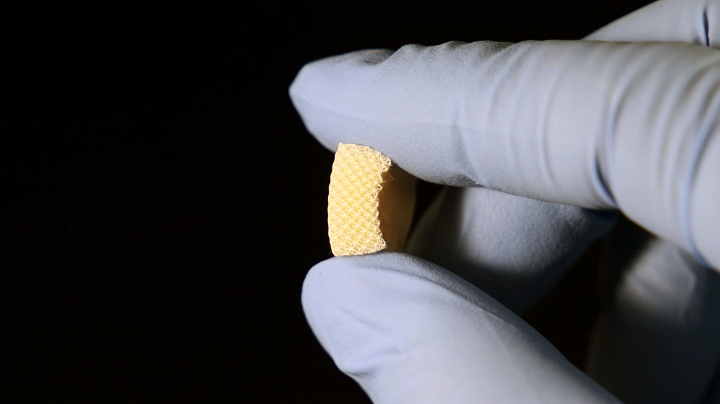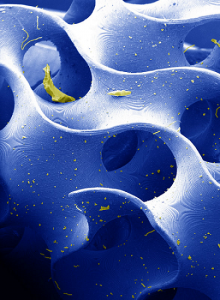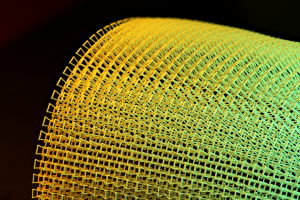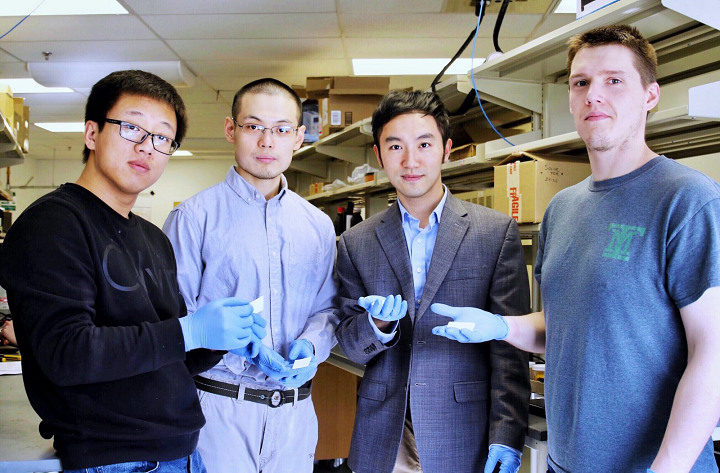These materials are inherently brittle, as they’re made up of ceramic and crystal. They come in just a few shapes, and can only be manufactured in a clean room, so their potential hasn’t been explore too much, especially not in the 3D printing industry. But Xiaoyu ‘Rayne’ Zheng, a member of the university’s Macromolecules Innovation Institute and an assistant professor of mechanical engineering in the College of Engineering, and the rest of his team determined a new way to 3D print piezoelectric materials so they’re not restricted by shape or size, and can be custom-designed to convert stress, movement, and impact from any direction into electrical energy.
The team explains their research further in a paper, titled “Three-dimensional printing of piezoelectric materials with designed anisotropy and directional response,” which was recently published in the Nature Materials journal. Co-authors of the paper are Huachen Cui, Ryan Hensleigh, Desheng Yao, Deepam Maurya, Prashant Kumar, Min Gyu Kang, Shashank Priya, and Zheng.
Zheng, who has experience in 3D printing at both the nanoscale and microscale, and his team created a model that lets them “manipulate and design arbitrary piezoelectric constants,” which ends in the material responding to incoming forces and vibrations and generating, and moving, an electric charge, through a set of 3D printable topologies. This allows users to not only prescribe, but also program, voltage responses to be reversed, magnified, or suppressed in any direction.
“We have developed a design method and printing platform to freely design the sensitivity and operational modes of piezoelectric materials. By programming the 3D active topology, you can achieve pretty much any combination of piezoelectric coefficients within a material, and use them as transducers and sensors that are not only flexible and strong, but also respond to pressure, vibrations and impacts via electric signals that tell the location, magnitude and direction of the impacts within any location of these materials,” Zheng explained.
Natural crystals play a role in the manufacturing of piezoelectrics, as the orientation of atoms are fixed at the atomic level. The researchers created a substitute that mimics the crystal, but at the same time makes it possible to alter the lattice orientation.
“We have synthesized a class of highly sensitive piezoelectric inks that can be sculpted into complex three-dimensional features with ultraviolet light,” Zheng said. “The inks contain highly concentrated piezoelectric nanocrystals bonded with UV-sensitive gels, which form a solution — a milky mixture like melted crystal — that we print with a high-resolution digital light 3D printer.”
- 3D printed flexible sheet of piezoelectric material.
The 3D printed piezoelectric materials were demonstrated at a tiny scale, which measures just fractions of the diameter of a single human hair.
“We can tailor the architecture to make them more flexible and use them, for instance, as energy harvesting devices, wrapping them around any arbitrary curvature. We can make them thick, and light, stiff or energy-absorbing,” said Zheng.
“We have a team making them into wearable devices, like rings, insoles, and fitting them into a boxing glove where we will be able to record impact forces and monitor the health of the user.
The material is five times more sensitive than flexible piezoelectric polymers, and it’s possible to tune and produce its shape and stiffness as a block or a thin sheet.
Priya, the Associate VP for Research at Penn State and a former professor of mechanical engineering at Virginia Tech, said, “The ability to achieve the desired mechanical, electrical and thermal properties will significantly reduce the time and effort needed to develop practical materials.”
The researchers have kept busy 3D printing the material and demonstrating its applications as smart materials used to harvest mechanical energy, wrap around curved surface, and convert motion. But even beyond consumer electronics and wearables, Zheng believes their work could be used in robotics, tactile sensing, and intelligent infrastructure. Then, structures could be completely made of piezoelectric material, so they can sense, monitor, and locate vibrations, motions, and impacts.
In order to demonstrate their material’s applicability for sensing the locations of dropping impacts, while also absorbing impact energy, the team 3D printed a small smart bridge. Additionally, they created a smart transducer that can convert underwater vibration signals to electric voltages.
[Source: Science Daily]“Traditionally, if you wanted to monitor the internal strength of a structure, you would need to have a lot of individual sensors placed all over the structure, each with a number of leads and connectors. Here, the structure itself is the sensor — it can monitor itself,” said Cui, a doctoral student with Zheng.
Discuss this and other 3D printing topics at 3DPrintBoard.com or share your thoughts below.
Subscribe to Our Email Newsletter
Stay up-to-date on all the latest news from the 3D printing industry and receive information and offers from third party vendors.
You May Also Like
Precision at the Microscale: UK Researchers Advance Medical Devices with BMF’s 3D Printing Tech
University of Nottingham researchers are using Boston Micro Fabrication‘s (BMF) 3D printing technology to develop medical devices that improve compatibility with human tissue. Funded by a UK grant, this project...
3D Printing Webinar and Event Roundup: April 21, 2024
It’s another busy week of webinars and events, starting with Hannover Messe in Germany and continuing with Metalcasting Congress, Chinaplas, TechBlick’s Innovation Festival, and more. Stratasys continues its advanced training...
3D Printing Webinar and Event Roundup: March 17, 2024
It’s another busy week of webinars and events, including SALMED 2024 and AM Forum in Berlin. Stratasys continues its in-person training and is offering two webinars, ASTM is holding a...
3D Printed Micro Antenna is 15% Smaller and 6X Lighter
Horizon Microtechnologies has achieved success in creating a high-frequency D-Band horn antenna through micro 3D printing. However, this achievement did not rely solely on 3D printing; it involved a combination...


































